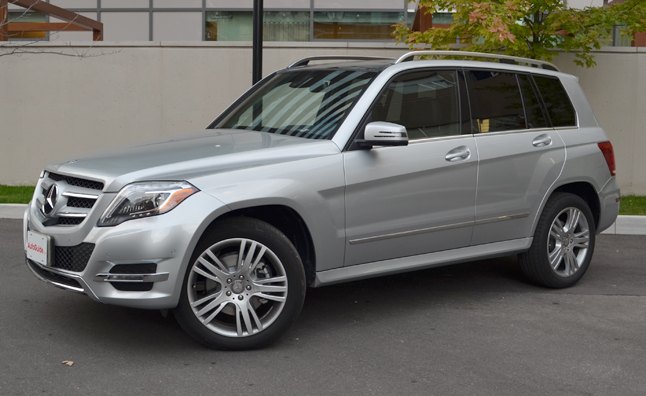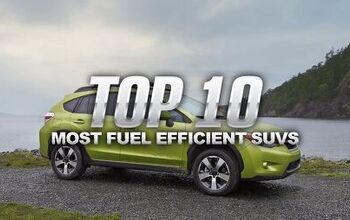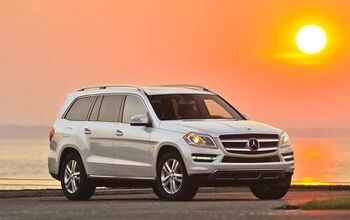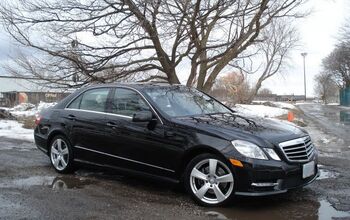Five-Point Inspection: 2013 Mercedes GLK 250 BlueTEC

Diesel engines are creeping into well-known vehicles you might never have expected to see harboring an oil burner.
The outlook is slowly changing, but most people will react similarly to news that your latest vehicle purchase involves visiting pumps most would reserve for big, filthy trucks…
“You bought a diesel? Aren’t they dirty? Don’t they have all that black smoke coming out the back,” they’ll all ask?
To which you will reply that modern diesels have mostly abandoned their barbaric past. In fact, they’re often remarkably clean and refined. Not only that, but they can be a lot of fun to drive. Take the Mercedes-Benz GLK 250 BlueTEC as an example. It uses a 2.1-liter turbocharged four-cylinder engine. The tiny mill makes more torque than much larger powerplants.
Diesel, that tricky stinker, is the one to credit with offering such venerable twist. Think again if you’re looking at a gas-burning GLK 350 because you’d be skipping the best version of this trucklet Mercedes ever offered its U.S. buyers. Here are five points on the good and bad of Mercedes’ newcoming: the GLK 250 BlueTEC.
Diesel vehicles typically get better mileage than their gasoline-burning siblings. It’s also usually easier to get that mileage them than it is with, say, a hybrid vehicle.
This is no exception. The diesel GLK more than proved its fuel frugality during a weeklong test spent mostly in city traffic. Heavy-footed driving is as common there as an NSA phone tap, but managing the advertised 28 mpg average wasn’t difficult.
The EPA’s official ratings suggest you should expect up to 24 mpg in the city and 33 on the highway, although it wouldn’t be surprising if careful drivers beat those numbers.
Engine size aside, the output from this vehicle is remarkable. A full 369 lb-ft of twist comes on at 1,600 rpm thanks to a pair of dual sequential turbochargers. You’ll rarely feel the powertrain running out of breath with Mercedes’ seven-speed automatic in play. It’s more than enough to deliver potent acceleration unbecoming of such a puny four-cylinder. The mill seems milder at highway speeds, but with 200 hp and the aforementioned torque offer plenty of “go.”
As more automakers lean toward vehicle styling with smoother features, the boxy GLK starts to look… edgy. It’s hard corners stand out beside competitors with smoother shapes meant to decrease the ever-important co-efficient of drag; nebulous a number as it may be to people who buy the cars.
With such stupendous fuel economy already in reach, fretting over fluid dynamics for fractions of a mile per gallon seems futile, doesn’t it?
Paying for a fancy fish dinner only to find stray bones is more annoying that sitting through one of Carrot Top’s stand-up routines. So is finding out that it’s possible to pour over $50,0000 into the GLK while still missing out on basics like leather trim.
If you find the idea of paying that price without leather seats to be offensive, there are other diesel crossovers to peruse. A Jeep Grand Cherokee might be more to your tastes? After all, it’s bigger and starts at around the same price.
If not, $1,850 buys a cockpit with quilted leather door panels and repurposed skin for your discerning bottom’s pleasure. It really is gorgeous, too. Air vents borrowed from the SLS and aluminum knob bezels make it a pleasant place to sit.
You’re planning to buy a Mercedes-Benz, which means you can probably afford to part with some extra dead presidents in the name of comfort. But buying into the luxury world doesn’t necessarily mean wasting money thoughtlessly. It isn’t uncommon for automakers to charge several thousand in premiums for a diesel-equipped vehicle compared to the gas-burning counterpart.
Mercedes isn’t playing that game. Instead, the starting sticker is only $1,500 higher than a base GLK 350. Pricing for the BlueTEC model starts at $39,905 including delivery.
Yes, the fuel is a more expensive. Yes, it’s sold at fewer stations. But with a relatively minimal markup, it’s tough to understand why any right-minded Mercedes lessee would say no to “doing the diesel.” It’s a dance worth trying…
Curious about a more detailed breakdown with full specifications, pricing and the chance for side-by-side comparison? The AutoGuide new cars section offers all that and more. Or you can go directly to a page dedicated to the vehicle itself.

Luke is an energetic automotive journalist who spends his time covering industry news and crawling the internet for the latest breaking story. When he isn't in the office, Luke can be found obsessively browsing used car listings, drinking scotch at his favorite bar and dreaming of what to drive next, though the list grows a lot faster than his bank account. He's always on <A title="@lukevandezande on Twitter" href="http://twitter.com/lukevandezande">Twitter</A> looking for a good car conversation. Find Luke on <A title="@lukevandezande on Twitter" href="http://twitter.com/lukevandezande">Twitter</A> and <A title="Luke on Google+" href="http://plus.google.com/112531385961538774338?rel=author">Google+</A>.
More by Luke Vandezande





































Comments
Join the conversation